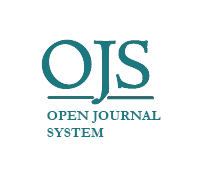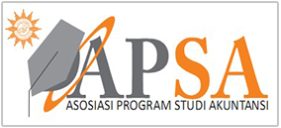Efficiency, Competitiveness And Resilience Of Banking: A Systematic Literature Review
DOI:
https://doi.org/10.22219/jrak.v14i4.36352Keywords:
Banking, Competitiveness, Efficiency, Resilience, Systematic Literature ReviewAbstract
Purpose: This study aims to analyze and classify the literature on efficiency, competitiveness and resilience of banking systems. The banking sector remains in a state of development, contending with problems including heightened competitiveness, regulatory pressures, and technological advancements. By sustaining equilibrium among efficiency, competitiveness, and resilience, banks can persist in flourishing within a dynamic environment.
Methodology/ Approach: by conducting literature studies published between 2015-2023 in the journal listed in the Journal Citation Report. It is then analyzed according to a systematic literature review approach involving interpretation-based assessments of research methodologies and critical findings in the study.
Findings: The direction of this research is expected in the future to have implications for academics and practitioners. This study found that Resilience is essential for banks to successfully confront the difficulties and hazards that periodically emerge.
Practical Implications: Banks must consistently prioritize enhancing their resilience by formulating effective strategies and perpetually fortifying their security systems and adherence to relevant norms and regulations.
Originality/value: This study indicates varios way to analyzing the elements, tactics, and regulations necessary to achieve banking efficiency, competitiveness, and resilience.
Downloads
References
Abel S, Bara A, Roux PL. 2019. Evaluating bank cost efficiency using stochastic frontier analysis. Journal of Economics and Behavioral Studies. 11(3). 48-57.
Aigner D, Lovell CK, Schmidt P. 1977. Formulation and Estimation Of Stochastic Frontier Production Function Models. Journal of econometrics. 6(1): 21-37. DOI:10.1016/0304-4076(77)90052-5
Ajija SR. 2011. Cara Cerdas Menguasai Eviews. Jakarta: Salemba Empat.
Ali, M, Alam N, Khattak MA, Azmi W. 2022. Bank Risk-Taking and Legal Origin: What Do We Know about Dual Banking Economies? Journal of Risk and Financial Management. 15 (224): 2-13. https://doi.org/10.3390/ jrfm15050224
Anwar M. 2019. Cost efficiency performance of Indonesian banks over the recovery period: A stochastic frontier analysis. 56(3): 377-389. https://doi.org/10.1016/j.soscij.2018.08.002
Ariff M, Shawtari FA. 2019. Efficiency, Asset Quality and Stability of the Banking Sector in Malaysia.
Bain JS. 1951. Relation of profit rate to industry concentration:American manufacturing 1936–1940. Quarterly Journal of Economics. 65: 293–324. DOI:10.2307/1882217
Banker RD, Charnes A, Cooper WW. 1984. Some Models for Estimating Technical and Scale Inefficiencies in Data Envelopment Analysis. Management Science. 30: 1078-1092. DOI:10.1287/mnsc.30.9.1078
Barney J. 1991. Firm resources and sustained competitive advantage. Journal of management. 17(1): 99-120. DOI:10.1016/S0742-3322(00)17018-4.
Barth JR, Caprio G, Levine R. 2008. Rethinking bank regulation: Till angels govern. Cambridge: Cambridge University Press.
Basel Committee on Banking Supervision. 2008. Principles for Sound Liquidity Risk Management and Supervision. Basel: Bank for International Settlements Press & Communications
Beaver WH. 1966. Financial ratios as predictors of failure. Journal of accounting research. 71-111. DOI: 10.2307/2490171
Berger AN, DeYoung R. 1997. Problem loans and cost efficiency in commercial banks. Journal of Banking & Finance, 21(12): 849-870.
Berger AN, Bouwman CHS. 2009. Bank Liquidity Creation. Review of Financial Studies. 22:3779-3837. DOI:10.1016/S0378-4266(97)00003-4
Brealey RA, Myers SC, Allen F. 2020. Principles of Corporate Finance. McGraw-Hill Education.
Brigham EF, Weston JF. 2005. Dasar-Dasar Manajemen Keuangan, Edisi Kesembilan Jilid 2. Jakarta: Penerbit Erlangga.
Buchory HA, Saladin D. 2010. Manajemen Pemasaran Ringkasan Praktis, Teori, Aplikasi & Tanya Jawab. Bandung: Linda Karya.
Charnes A, Cooper W, Lewin AY, Seiford LM. 1997. Data Envelopment Analysis Theory, Methodology and Applications. Journal Of The Operational Research Society. 48(3): 332-333. DOI: 10.1057/palgrave.jors.2600342
Cheng H. 1986. Analysis of Panel Data. Econometric Society Monographs No. 11. Cambridge University Press.
Chotigeat T, Kramer S, Pyun CS. 2004. Efficiency and Resilience of French Multinational Banks: Evidence From the Pre‐Euro Era. Multinational Business Review. 12(1): 3–18. DOI: 10.1108/1525383X200400001
Fungavoca Z, Pessarossi P, Weill L. 2012. Is bank competition detrimental to efficiency? Evidence from China. BOFIT- Institute for Economies in Transition Bank of Finland.
David FR. 2011. Manajemen Strategis. Edisi Tujuh. Jakarta: PT Prenhalindo.
Demirgüç-Kunt A, Huizinga H. 1998. Determinants of Commercial Bank Interest Margins and Profitabilitas: Some International Evidence. World Bank Economic Review. 13:379-408
Dzeawuni WA. 2008. CAMELs and banks performance evaluation: The way forward. Professor Muhammad, CAMELs and Banks Performance Evaluation: The Way Forward (June 24, 2008).
Erasmus C. 2014. An empirical study of bank efficiency in South Africa using the standard and alternative approaches to data envelopment analysis (DEA). Journal of Economics and Behavioral Studies. 6(4): 310-317. DOI: 10.22610/jebs.v6i4.494.
Eriyatno S. 2012. Ilmu Sistem: Meningkatkan Mutu dan Efektivitas Manajemen. Bogor (ID): Guna Widya.
Farrel MJ. 1957. The Measurement of Productive Efficiency. Journal of Royal Statistical Society. A (20): 253-282. DOI: 10.2307/2343100.
Timothy CJ. 1995. A Model for Technical Efficiency Effects in A Stochastic Frontier Production Function. Empirical Economics. 20: 325-332. DOI: 10.1007/BF01205442
Ghosh R, Saima FN. 2021. Resilience Of Commercial Banks of Bangladesh to The Shocks Caused by COVID-19 Pandemic: An Application Of MCDM-Based Approaches
Ghozali I. 2002. Aplikasi Analisis Multivariat Dengan SPSS. Edisi Kedua, Badan Penerbit Universitas Diponegoro, Semarang.
Gujarathi DM. 2022. Gujarati: Basic Econometrics. McGraw-Hill.
Hajiagha SHR, Hashemi SS, Mahdiraji HA. 2016. Fuzzy C-means based data envelopment analysis for mitigating the impact of units’ heterogeneity. Kybernetes.
Haque MI, Tausif MR, Anis A. 2020. Continued Discussion on Conventional Versus Islamic Banks: Combining Financial Ratios and Efficiency. Banks and Bank Systems. 15(1), 132. DOI:10.21511/bbs.15(1).2020.13
Hassan MK, Bashir AHM. 2002. Determinants of Islamic Banking Profitabilitas. International Journal. ERF paper.
He J, Wan Y, Feng L, Ai J, Wang Y. 2016. An integrated data envelopment analysis and emergy-based ecological footprint methodology in evaluating sustainable development, a case study of Jiangsu Province, China. Ecological Indicators, 1 (70):23-34. DOI: 10.1016/j.ecolind.2016.05.042.
Hong H, Huang J, Wu D. 2014. The information content of Basel III liquidity risk measures. Journal of Financial Stability, 15:91-111. DOI: 10.1016/j.jfs.2014.09.003
IMF. 2008. Global Financial Stability Report, April 2008: Containing Systemic Risks and Restoring Financial Soundness.
Irham F. 2012. Analisis Laporan Keuangan. Cetakan Ke-2. Bandung: Alfabeta.
Iveta R, Stavarek D. 2014. Concentration and Competition the Banking Sector of Turkey. AE, XVI (36).
Ja A, Marimuthu M. 2015. Bankruptcy and Sustainability: A Conceptual Review on Islamic Banking Industry. Global Business and Management Research: An International Journal. 7 (1).
Jauhara, Jauhara, and Muhammad Ramaditya. 2023. “The Influence of Knowledge Management, Entrepreneurial Orientation, Transformational Leadership, and Control Management System on Learning Organization”. Indonesian Journal of Business, Accounting and Management 6 (1), 33 - 44. https://doi.org/10.36406/ijbam.v6i01.798
Kasmir. 2013. Analisis Laporan Keuangan. Rajawali Pers: Jakarta.
Khalifaturofi’ah SO. 2018. Peningkatan Daya Saing Perbankan Melalui Efisiensi Biaya Dengan Metode Stochastic Frontier Approach. INOBIS: Jurnal Inovasi Bisnis dan Manajemen Indonesia, 1(4): 434-444. DOI: 10.31842/jurnal-inobis.v1i4.49
Kishan RP, Opiela TP. 2000. Bank size, bank capital and the bank lending channel. Journal of Money, Credit and Banking, 32 (1): 121–141. DOI: 10.2307/2601095
Korzeb Z, Niedziółka P, Silva A. 2021. Impact Of The COVID-19 Crisis on The Portuguese Banking System. Linear Ordering Method.
Kozak S. 2021. The Impact of COVID-19 on Bank Equity and Performance: The Case of Central Eastern South European Countries.
Kuckertz A, Brändle L, Gaudig A, Hinderer S, Reyes CAM, Prochotta A, Steinbrink KM, Berger ES. 2020. Startups in times of crisis–A rapid response to the COVID-19 pandemic. Journal of Business Venturing Insights, 13.
Leflar JJ, Siegel MH. 2016. Organizational resilience managing the risks of disruptive events - a practitioner's guide. CRC Press.
Lengnick-Hall CA, Beck TE, Lengnick-Hall ML. 2011. Developing a capacity for organizational resilience through strategic human resource management. Human resource management review, 21(3): 243-255. DOI: 10.1016/j.hrmr.2010.07.001.
Levine R. 1997. Financial development and economic growth: views and agenda. Journal of economic literature, 35(2): 688-726.
Lloret A. 2016. Modeling corporate sustainability strategy. Journal of Business Research, 69(2): 418-425. DOI: 10.1016/j.jbusres.2015.06.047.
Magretta J. 2011. Understanding Michael Porter: The essential guide to competition and strategy. Harvard business press.
Manuel O, Mario C. 2003. Capital Structure and Determinants: Evidence from the Portuguese Banking Industry.
Majid A, Zulkhibri M, Fadzlan S. 2007. Market Structure and Competition in Emerging Market: Evidence from Malaysian Islamic Banking Industry. Published in Journal of Economic Co
Mujianto, M., Ramaditya, M., Mustika, M., Tanuraharjo, H., & Maronrong, R. (2022). Dampak Pandemi Covid-19 pada UMKM Warung Ritel Tradisional di Indonesia dan Strategi Bertahannya. Jurnal STEI Ekonomi, 30(02), 60 - 74. https://doi.org/10.36406/jemi.v30i02.494 operation. 2 (28): 99-121.
Muhammad Ramaditya, Enrica Randy, and Syahrul Effendi. 2023. “The SMEs Resilience and Sustainability Strategy in Jambi”. International Journal of Research in Business and Social Science (2147- 4478) 12 (3):10-21. https://doi.org/10.20525/ijrbs.v12i3.2558.
Drehmann M, Nikolaou K. 2013. Funding liquidity risk: definition and measurement. Journal of Banking & Finance. 37(7), 2173-2182. DOI: 10.1016/j.jbankfin.2012.01.002.
Meeusen W, van Den Broeck J. 1977. Efficiency Estimation from Cobb Douglas Production Functions with Composed Error. International Economic Review. 18(2): 435-444. DOI: 10.2307/2525757
Mintzberg H. 1994. The Rise and Fall of Strategic Planning. Prentice Hall.
Mikita M. 2022. The Interrelationship Among Efficiency and Concentration of Banking System and its Stability: Evidence from Poland
Molyneux P, Lloyd-Williams DM, Thornton J. 1994. Competitive Conditions in European Banking. Journal of Banking and Finance. 18 (3):445-459. DOI: 10.1016/0378-4266(94)90003-5
Molyneux P, Thornton J. 1992. Determinants of European Bank Profitability: A Note. Journal of Banking and Finance. 16: 1173-1178. DOI: 10.1016/03778-4266(92)90065-8
Murinde V, Rizopoulos E, Zachariadis M. 2022. The impact of the FinTech revolution on the future of banking: Opportunities and risks. International Review of Financial Analysis. 81: 102103. DOI: 10.1016/j.irfa.2022.102103.
Nelson RR. 1993. National innovation systems: a comparative analysis. Oxford University Press on Demand.
Nguyen TPT, Nghiem SH. 2016. Market concentration, diversification and bank performance in China and India An application of the two-stage approach with double bootstrap.
Nikolaou K. 2009. Liquidity (Risk) Concepts: Definitions and Interactions. SSRN Electronic Journal.
Obilikwu J. 2018. The Impact of Capital, Concentration, Size and Liquidity on Banking Industry Performance in Nigeria.
O’Reilly III CA, Tushman ML. 2008. Ambidexterity as a dynamic capability: Resolving the innovator's dilemma. Research in organizational behavior, 28: 185-206. DOI: 10.106/j.riob.2008.06.002
Omarini A. 2022. Retail Banks’ Challenges and Opportunities from Vision and Strategy to Managing People, Processes and Capital. Current Aspects in Business, Economics and Finance. 3: 74-103. DOI: 10.9734/bpi/cabef/v3/6935f
Palmié M, Wincent J, Parida V, Caglar U. 2020. The evolution of the financial technology ecosystem: An introduction and agenda for future research on disruptive innovations in ecosystems. Technological forecasting and social change. 151: 119779. DOI: 10.1016/j.techfore.2019.119779.
Pearce II JA, Robinson RB. 2000. Strategic Management Formulation Implementation and Control. Seven Edition. New York: Irwin McGraw-Hill.
Porter ME. 1990. The competitive advantage of nation. The president and fellows harvard collage. All rights reserved. Harvard business review.
Porter ME. 1980. Competitive Strategy: Techniques for Analyzing Industries and Competitors. New York: Free Press.
Porter ME. 1998. The competitive advantage of Nations. Palgrave.
Prahalad CK, Hamel G. 2006. The Core Competence of the Corporation. In: Hahn, D., Taylor, B. (eds) Strategische Unternehmungsplanung — Strategische Unternehmungsführung. Springer, Berlin, Heidelberg. Productivity of Commercial Banks in Turkey Pre- and during COVID-19.
Pranowo K. 2010. Analisis Corporate Financial Distress Perusahaan Publik (Non Financial Companies). Student Journal, 8.
Prastowo A. 2011. Metode Penelitian Kualitatif dalam Perspektif Rancangan Penelitian. Jogjakarta: Ar-Ruzz Media
Pratiwi R, Daulay WAA, Chairina. 2022. Studi literatur peran bank Indonesia terhadap stabilitas keuangan. Jurnal Ekonomika dan Bisnis. 2(3): 748-753. DOI : https://doi.org/10.47233/jebs.v2i3.261
Putra , A. ., Fathan, I. ., Desi Permata Sari, Vicky Brama Kumbara, & Muhammad Ramaditya. (2023). Sosialisasi Strategi Pemasaran Kreatif pada Dapue Kopi Roastery Padang. Majalah Ilmiah UPI YPTK, 30(1), 26–31. https://doi.org/10.35134/jmi.v30i1.145
Ramaditya, M., Maarif, M. S., Affandi, J., & Sukmawati, A. (2022). Reinventing talent management: How to maximize performance in higher education. Frontiers in Education, 7. https://doi.org/10.3389/feduc.2022.929697 (4), 6342–6360. https://doi.org/10.35445/alishlah.v15i4.3773
Ramaditya, Muhammad, and Friska Intan Sundari. "The Role of Servant Leadership in Imrpoving Entrepreneurial Mindset, Cli-mate, Knowledge Management, Organization Development and Its Impact on Higher Education Performance." Business Review and Case Studies 4, no. 3 (2023): 303-303.
Reivich K, Shatte A. 2002. The Resilience Factor: 7 Essential Skills for Overcoming Life’s Inevitable Obstacles. New York: Broadway Books.
Rosse JN, Panzar JC 1977. Chamberlin vs. Robinson: An Empirical Testfor Monopoly Rents. Bell Laboratories Economics Discussion Paper No. 90.
Rudianto. 2013. Akuntansi Manajemen Informasi untuk Pengambilan Keputusan Strategis. Jakarta: Erlangga.
Ruza C, de la Cuesta-González M, Paredes-Gazquez J. 2019. Banking system resilience: an empirical appraisal. Journal of Economic Studies. 46(6), 1241-1257. DOI: 10.1108/JES-06-2018-0199.
Saaty TL. 2003. Proses Hirarki Analitik untuk Pengambilan Keputusan dalam Situasi yang Kompleks. Jakarta: PT Pustaka Binaman Pressindo.
Sabatino M. 2016. Economic crisis and resilience: Resilient capacity and competitiveness of the enterprises. Journal of Business Research, 69(5): 1924–1927. DOI: 10.1016/j/jbusres.2015.10.081
Sadalia I, Kautsar MH, Irawati N, Muda I. 2018. Analysis of the efficiency performance of sharia and commercial banks using stochastic frontier analysis. Banks and Bank Systems. 13(2): 27-39. doi: 10.21511/bbs.13(2).2018.03
Sadler P. 2003. Strategic Management 2nd Edition. Londýn: Kogan Page Limited.
Sari S, Ajija SR, Wasiaturrahma W, Ahmad RA. 2022. The Efficiency of Indonesian Commercial Banks: Does the Banking Industry Competition Matter?. Sustainability. 14(17). 10995. DOI: 10.3390/su141710995
Shah WUH, Hao G. Zhu N, Yasmeen R, Padda IUH, Kamal MA. 2022. A cross-country efficiency and productivity evaluation of commercial banks in South Asia: A meta-frontier and Malmquist productivity index approach. PLoS ONE 17(4): e0265349. https://doi.org/10.1371/journal.pone.0265349
Settembre-Blundo D, González-Sánchez R, Medina-Salgado S, García-Muiña FE. 2021. Flexibility and resilience in corporate decision making: a new sustainability-based risk management system in uncertain times. Global Journal of Flexible Systems Management, 22(Suppl 2): 107-132. DOI: 10.1007/s40171-021-00277-7
Setiawan A. 2012. Analisis Pengaruh Kinerja Keuangan dalam Memprediksi Pertumbuhan Laba. Jurnal Aplikasi Manajemen, 10(3).
Sheffi Y. 2015. The power of resilience: How the best companies manage the unexpected. MIT Press.
Sjöberg G. 2011. Handling Systemically Important Banks in Distress –Some Thoughts from a Swedish Perspective. European Business Organization Law Review. 12: 227-250. DOI: 10.1017/S156675291120002.
Triandaru S, Budisantoso T. 2006. Bank dan Lembaga Keuangan Lain. Jakarta: Salemba Empat.
Svitalkova Z. 2014. Comparison and evaluation of bank efficiency in selected countries in EU. Procedia Economics and Finance, 12: 644-653. DOI: 10.1016/S2212-5671(14)00389-X
Tan Y. 2016. Efficiency and competition in Chinese banking. Elsevier, Chandos Publishing, an imprint of Eslevier.
Teece DJ, Pisano G, Shuen A. 1997. Dynamic capabilities and strategic management. Strategic management journal, 18(7): 509-533. DOI: 10.1002/(SICI)1097-0266(199708)
Thomas, A. 2020. Convergence and digital fusion lead to competitive differentiation. Business Process Management Journal, 26(3): 707-720. DOI: 10.1108/BPMJ-01-2019-0001
Ullah S, Majeed A, Popp J. 2023. Determinants of banks’s efficiency in an emerging economy: A data envelopment analysis approach. PLos ONE. 18(3): e0281663. https://doi.org/ 10.1371/journal.pone.0281663
Usman M, Wang Z, Mahmood F, Shahid H. 2010. Scale Efficiency in Banking Sector of Pakistan. International Journal of Business and Management, 5(4): 104–116.
Villar AS, Khan N. 2021. Robotic process automation in banking industry: a case study on Deutsche Bank. Journal of Banking and Financial Technology. 5(1): 71-86. DOI: 10.1007/s42786-021-00030-9
Watchravesringkan K. 2009. The Competitive Position of Thailand’s Apparel Industry: Challenges and Opportunities for Globalization. Journal of Fashion Marketing and Management, 14: 576-597. DOI: 10.1108/13612021011081751
Wen SY, Yu J. 2013. Banking Stability, Market Structure and Financial System in Emerging Countries. Journal of Applied Finance & Banking, 3 (3): 1792-6580.
Published
Issue
Section
License
Copyright (c) 2024 Sylvia, Mohammad Syamsul Maarif, Irman Hermadi, Zenal Asikin

This work is licensed under a Creative Commons Attribution-NonCommercial-ShareAlike 4.0 International License.

Jurnal Reviu Akuntansi dan Keuangan is licensed under a Creative Commons Attribution-NonCommercial-ShareAlike 4.0 International License.
Authors who publish with this journal agree to the following terms:
- Authors retain copyright and grant the journal right of first publication with the work simultaneously licensed under a Creative Commons Attribution-NonCommercial-ShareAlike 4.0 International License that allows others to share the work with an acknowledgement of the work's authorship and initial publication in this journal.
- Authors are able to enter into separate, additional contractual arrangements for the non-exclusive distribution of the journal's published version of the work (e.g., post it to an institutional repository or publish it in a book), with an acknowledgement of its initial publication in this journal.
- Authors are permitted and encouraged to post their work online (e.g., in institutional repositories or on their website) prior to and during the submission process, as it can lead to productive exchanges, as well as earlier and greater citation of published work (See The Effect of Open Access).










